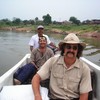- Vlog 48-This SMALL TOWN in Matagalpa has BEAUTIFUL HOUSES!Posted 1 year ago
- Vlog 47-Driving TOUR in the North City of Nicaragua “ESTELI”Posted 1 year ago
- Vlog 46- Leon during Holy Week A GREAT TIME TO VISIT!Posted 1 year ago
- Vlog 45- Moving to Nicaragua – How to Relocate SuccessfullyPosted 1 year ago
- Vlog 44-Fireworks in Leon NicaraguaPosted 1 year ago
- Vlog 43- Is it true Why No Rental Properties in Poneloya & Las Penitas NicaraguaPosted 1 year ago
- Vlog 42-This is the TRAFFIC at NIGHT in Esteli, Nicaragua.Posted 1 year ago
- Vlog 41- Cultural SHOCK in Reverse Trip to the USA from NicaraguaPosted 1 year ago
- Vlog 40-Is U.S Real Estate Market impacting Nicaragua?Posted 1 year ago
- Vlog 38- Why choosing an expensive area in Nicaragua can be a mistakePosted 1 year ago
Harvest Initiative in Nicaragua


Bringing Projects to Life

What Makes Harvest Initiative Unique? We have a deep roots approach to ministry in the communities we serve. Alongside the people we build schools, drill wells and help found congregations to foster an integral testimony for years to come. Over the years we have been able to integrate a number of activities making the overall impact in a community greater. We may begin our relationship with a group of people through a water project or flood relief, but our goal is always to move toward long term presence through schools, churches, or economic development. Not every project results in a long term presence, nor is it a fast process. However relationships that now span 25+ years allow us to see vulnerable children grow to become productive adults, parents, wage earners and active members in church.

Are Harvest Intiative’s projects sustainable? All of our ministry sites have a local income generating component to help cover costs. The HI base site is a working cattle ranch. The schools require a small copay from parents. Small business accelerators assist entrepreneurs with start up and expansion of enterprises. Harvest Initiative as a group takes on subcontracted construction projects to maintain a number of revenue sources. We do depend on donations for many of our programs, especially the schools that provide education to many who are virtually destitute in order to provide a quality education. We always point out that the parents pay the equivalent of one days wage for an unskilled laborer each month for their child to attend school, it’s a very reasonable amount. We also always point out that even prestigious Harvard University is not “sustainable” as it benefits from countless grants, alumni donations, and federal loan guarantees for their students. If a well endowed Ivy League school needs outside help, how much more a neighborhood school serving the poorest needs help. What is sustainable is the lives of the students that recieve education in our schools. Only ten percent of Nicaraguans finish High School so our students enter the workforce with a great advantage. Education doesn’t success in life, but lack of education destines a child to almost certain poverty.
How has the COVID-19 pandemic impacted HI? The current crisis has caused disruption of our schools routines, forcing our teachers to rapidly start delivering course materials remotely. Moving away from the classrooms has been a great challenge since there is very little internet, but using take home sheets, some online resources, and meeting in very small groups our teachers have done an exemplary job managing a near worst case scenario. Other activities have been postponed, but in fact we have been able to increase the number of Feed Nicaragua meals distributed to the sites around the country. Our goal is to distribute at least 600,000 meals to the communities whose livelihoods have been cut off due to Covid related layoffs, supply chain or agricultural interruption.
Marcus Pearson [email protected]
